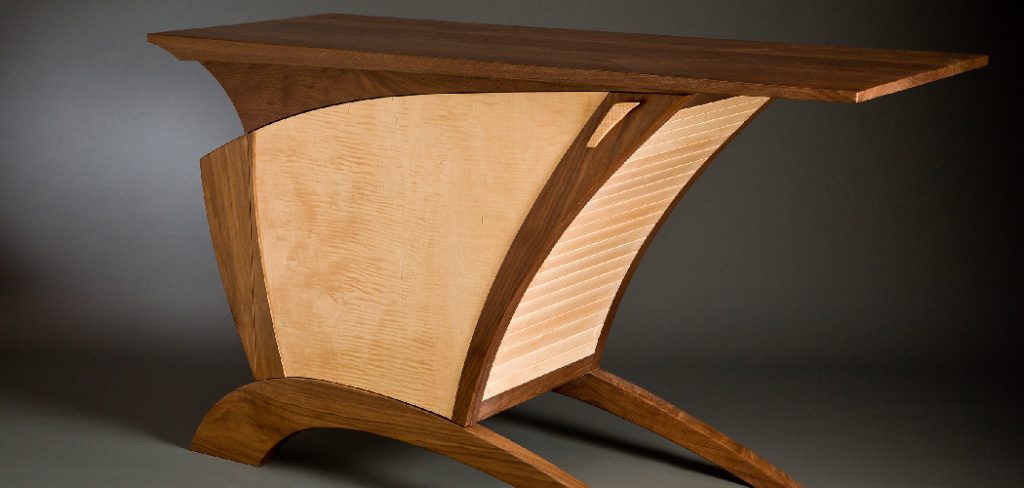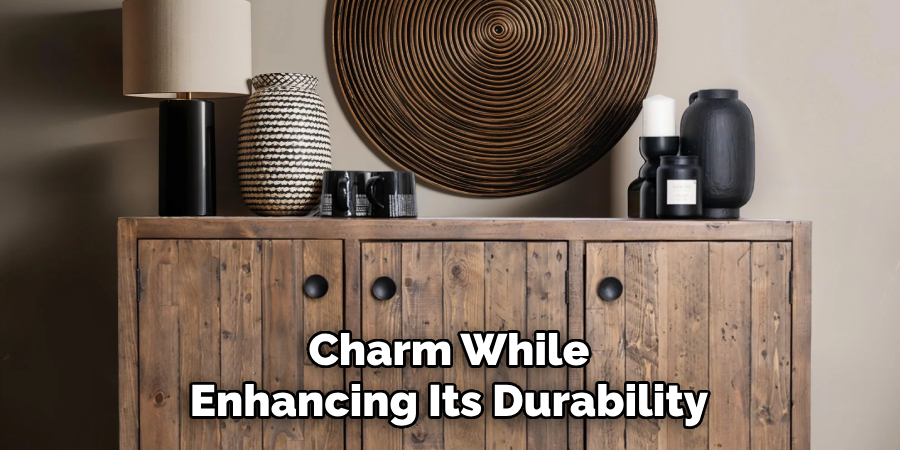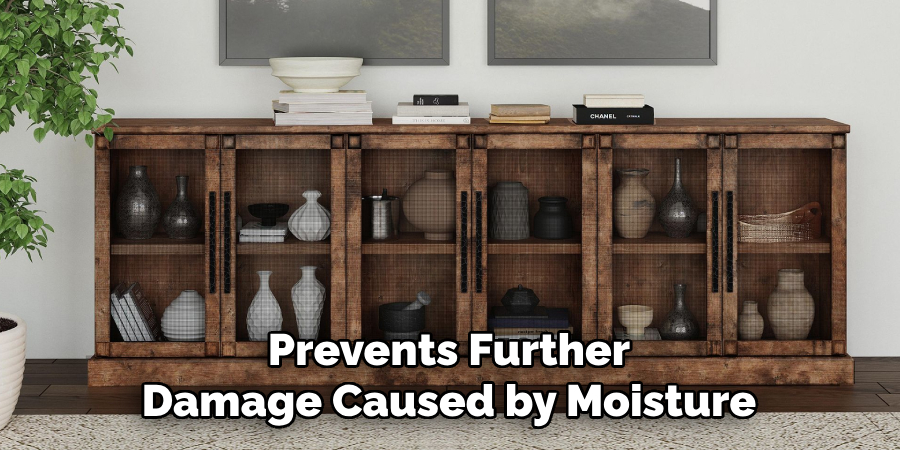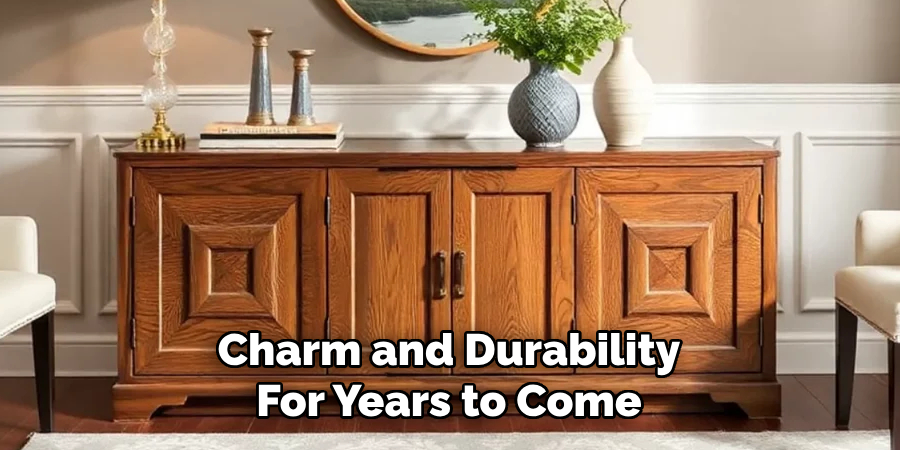Restoring a reclaimed wood buffet can breathe new life into a beautiful piece of furniture, allowing it to shine once again as a focal point in your home. Whether the buffet has scratches, dents, or other signs of wear, a thorough repair process can preserve its charm while enhancing its durability.

This guide will walk you through the essential steps of how to repair a reclaimed wood buffet, ensuring it retains its character and function for years to come.
Common Issues Found in Reclaimed Wood Furniture
Reclaimed wood furniture, while full of charm and character, often comes with its own unique set of challenges. One of the most common issues is structural damage, such as cracks, loose joints, or warping, which can occur due to the wood’s age or past environmental exposure.
Another frequent concern is surface wear, including scratches, dents, and gouges, which may require sanding or filling to restore a smooth finish. Reclaimed wood may also have embedded nails, screws, or other hardware remnants that need careful removal to prevent injuries or interference with repairs. Additionally, some pieces may suffer from discoloration, stains, or uneven finishes caused by prolonged exposure to sunlight, moisture, or previous neglect. Finally, reclaimed wood can occasionally host pests, such as termites or woodworms, necessitating treatment to ensure the furniture is safe and durable.
Recognizing these common issues is the first step in properly restoring any reclaimed wood piece.

Checking for Structural Damage
Before beginning any restoration process, it is essential to check for structural damage in the reclaimed wood. This involves carefully inspecting each piece for cracks, splits, or warping that could compromise its integrity. Look for signs of weakened areas, such as loose joints or excessive bending, which may require reinforcement or replacement.
Additionally, assess whether prior repairs, such as glued seams or patched sections, are still holding firm. Addressing structural issues early ensures the reclaimed wood will be sturdy and reliable for its intended use, allowing the restoration to proceed with confidence.
10 Methods How to Repair a Reclaimed Wood Buffet
1. Assess the Condition of the Buffet
Before beginning any repairs, thoroughly inspect the buffet to determine the extent of the damage. Look for structural issues such as loose joints, broken legs, or warped wood. Check for signs of pest infestation, rot, or deep scratches. Examine the hardware to see if screws, hinges, or handles need replacing. By identifying problem areas early, you can plan the best restoration approach and gather the necessary materials for the repair process. Taking notes or pictures can also help in documenting what needs to be addressed before starting the restoration.
2. Reinforce Loose Joints and Connections
Over time, the joints of a reclaimed wood buffet may loosen due to wear and tear. To fix this, disassemble the affected sections if possible and apply high-quality wood glue to the joints before clamping them together until the glue dries. For additional reinforcement, use wooden dowels, corner brackets, or metal braces to ensure the buffet remains sturdy and secure. If the joints have deteriorated significantly, consider replacing old wooden pegs with fresh ones for added strength. This method helps restore structural integrity while preserving the piece’s original craftsmanship.
3. Fill Cracks and Gaps With Wood Filler or Epoxy
Cracks and gaps are common in reclaimed wood furniture due to aging and changes in humidity. To repair these imperfections, use a high-quality wood filler that matches the color of the buffet. Apply the filler using a putty knife, smoothing it out to ensure a seamless blend with the existing wood. For larger gaps, consider using an epoxy resin, which provides a durable, long-lasting repair. Allow the filler or epoxy to dry completely before sanding it down. This method not only enhances the appearance of the buffet but also prevents further damage caused by moisture, pests, or general wear and tear.

4. Replace or Repair Broken Legs and Supports
A buffet’s legs and support structures bear most of its weight, making them prone to damage. If a leg is broken or weakened, reinforce it by using wood glue and screws. If a complete replacement is necessary, choose reclaimed wood that matches the buffet’s original material and shape it to fit seamlessly. Properly securing the legs will restore balance and stability to the piece. If the legs are wobbly, consider adding brackets or reinforcing the base with additional wood blocks to provide extra support.
5. Remove Stains, Water Marks, and Discoloration
Reclaimed wood often has water stains, ink marks, or discoloration from years of use. To remove stains, try a mixture of vinegar and baking soda, applying it with a soft cloth and gently scrubbing the affected area. For stubborn watermarks, place a cloth over the stain and gently apply heat with an iron to draw out moisture. If the stains are deep, light sanding and refinishing may be required to even out the surface. Lemon juice or hydrogen peroxide can also be used for organic stains, but always test in an inconspicuous spot before applying widely.
6. Sand and Smooth the Surface Carefully
Due to years of wear, reclaimed wood buffets may have rough textures, splinters, or uneven surfaces. Sanding is essential to create a smooth finish while retaining the wood’s rustic charm. Start with medium-grit sandpaper (120-150 grit) and work up to fine-grit (220 grit) for a polished effect. Be careful not to over-sand, as you may remove the aged patina that gives the buffet its character. For intricate carvings, use a sanding sponge or small rotary tool to reach delicate areas without damaging details.
7. Fix or Replace Damaged Drawers and Hardware
Drawers in a reclaimed wood buffet can become misaligned or stuck due to swelling, wear, or damage. To fix this, check the slides and runners, sanding them down if necessary or replacing them with smooth-gliding alternatives. If the drawer hardware is damaged or missing, replace it with vintage or antique-style hardware that complements the piece’s aesthetic. For stuck drawers, a little wax or soap rubbed along the tracks can improve functionality. Properly functioning drawers enhance the buffet’s usability while preserving its authenticity.
8. Stabilize Warped or Bowed Wood Panels
Reclaimed wood furniture can develop warping due to exposure to moisture and temperature fluctuations. If the buffet has warped panels, attempt to flatten them by applying gentle, consistent pressure over time. Using clamps and a damp cloth, slowly reintroduce moisture to reshape the wood. Placing a slightly damp towel over the warped area and applying weight overnight may help flatten minor warps. In extreme cases, replacing the panel with matching reclaimed wood may be necessary to maintain the buffet’s structural integrity. Sealing the wood after repair can help prevent future warping.

9. Apply a Protective Finish for Longevity
After completing all repairs, applying a protective finish is crucial to enhance durability and maintain the buffet’s beauty. Choose a finish that complements the wood’s aged appearance, such as a natural oil, beeswax, or matte polyurethane. If you prefer a slightly tinted look, use a wood stain before sealing. A protective coating will help prevent future damage from moisture, scratches, and everyday use while enhancing the wood’s natural grain and texture. Apply multiple thin coats for better absorption and a more natural look.
10. Preserve the Original Character and Patina
When repairing a reclaimed wood buffet, it’s important to maintain its original character and patina rather than stripping away its charm. Instead of fully refinishing the piece, consider light restoration methods that preserve its aged appearance. Techniques such as dry brushing, distressing, or applying a light stain can enhance the buffet’s vintage appeal without making it look brand new. If the original finish has chipped in places, touch it up lightly rather than stripping it entirely, ensuring the buffet retains its rustic, timeworn beauty.
Maintenance and Upkeep
To ensure your antique buffet remains in excellent condition, regular maintenance is essential. Dust the surface gently with a soft, lint-free cloth to prevent buildup that can dull its finish. Avoid using harsh chemical cleaners, as they can damage the wood and any remaining original finishes. Instead, opt for a mild, wood-safe cleaner or a mixture of vinegar and water for gentle cleaning. Periodically, apply a high-quality furniture wax or polish to preserve the wood’s luster and protect it from drying out. Be mindful of environmental factors—keep the buffet away from direct sunlight, extreme heat, or high humidity to prevent warping or cracking. With proper care, your antique buffet can maintain its charm and durability for years to come.

Conclusion
Restoring a reclaimed wood buffet requires patience, care, and an appreciation for the craftsmanship of the past. By following these ten methods, you can successfully repair and preserve your buffet while maintaining its rustic beauty. Whether reinforcing joints, fixing broken parts, or enhancing its finish, each repair step contributes to a functional and stunning piece of furniture that can be enjoyed for years to come. Taking the time to properly restore your buffet not only increases its lifespan but also preserves its history and aesthetic charm for future generations.

